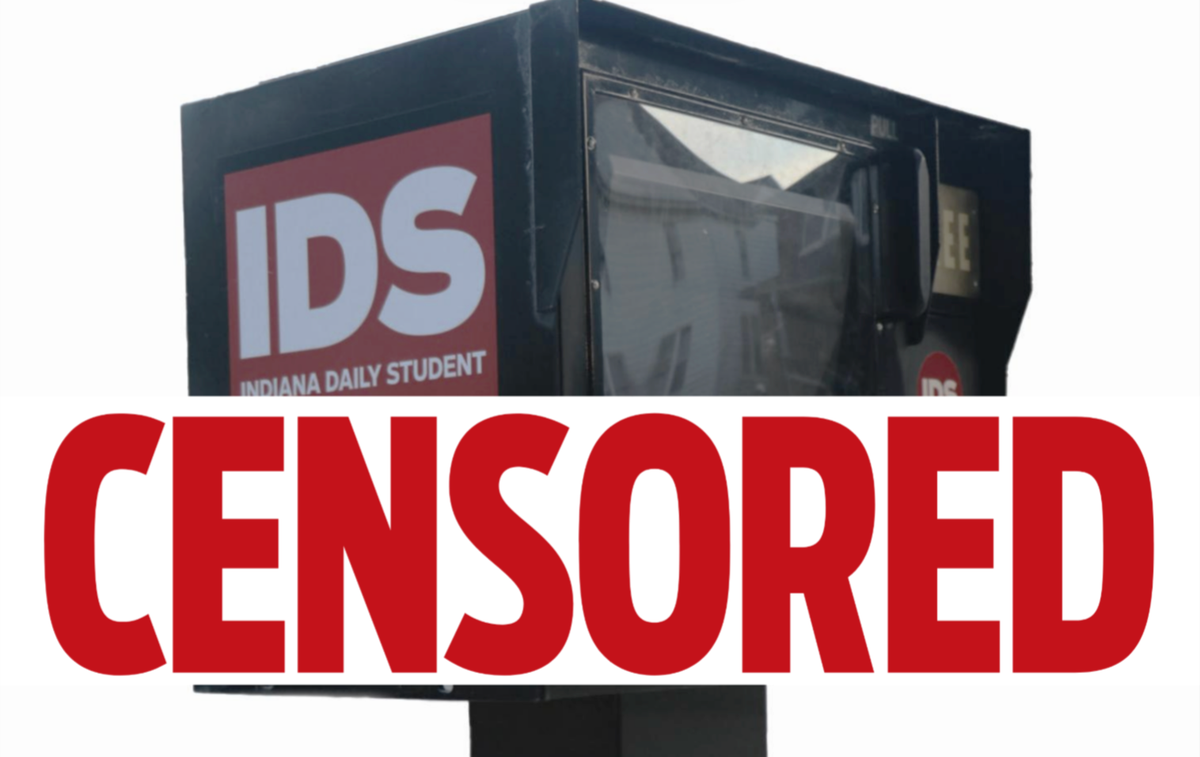Brazen Censorship Against Student Journalists At Indiana University

Indiana University Media School administrators shut down printing of the school’s student newspaper after firing the newspaper’s chief adviser. The brazen act of censorship sparked widespread media coverage and a show of solidarity from student journalists at Purdue University, which is the school’s rival.
A little more than a year ago, the Media School cut print production of the school’s weekly student newspaper to seven “special editions” per semester. The decision was undertaken without consulting the publication and went into effect for the spring 2025 semester
Media school administrators demanded on October 7 that Indiana Daily Student editors refrain from including any news or "traditional front page news coverage” in their special printed editions. Jim Rodenbush, director of student media and chief adviser for the student newspaper, refused to help administrators censor the publication.
On October 13, Indiana Daily Student editors Mia Hilkowitz and Andrew Miller pleaded with Dean David Tolchinsky and leadership of the media school. They asked that administrators uphold students’ First Amendment rights and avoid taking this action. The editors pointed out that the censorship would negatively impact the newspaper’s relationship with advertisers, which have helped fund the publication.
Rodenbush was fired the following day. “I was terminated because I was unwilling to censor student media. 100%,” Rodenbush declared. “I have no reason to believe otherwise.”
After the student newspaper’s chief adviser was fired on October 14, media school administrators ended printing for the publication once and for all.
Hilkowitz and Miller responded, “Editorial decisions, including the contents of our print product, firmly lie in the hands of the students. This is not about print. This is about a breach of editorial independence. If IU decides certain types of content are ‘bad for business,’ what stops them from prohibiting stories that hold them to account on our other platforms?”
IU's Student Government said, "During a period when our free speech rankings have struggled, scoring third-lowest in the nation amongst public universities, the censorship of the IDS is a rightfully worrisome step for the future of this university and students’ voices."
“This disregards strong First Amendment protections and a long-standing tradition of student editorial independence at Indiana University,” stated Jonathan Gaston-Falk, staff attorney at the Student Press Law Center.
The Foundation for Individual Rights and Expression (FIRE) plainly characterized the school’s attack on freedom of the press. “Firing Rodenbush and banning the paper are textbook First Amendment violations that IU claims are part of a digital-first media strategy. But that’s a smokescreen.”
“Cutting the print edition and removing a longtime adviser after critical coverage isn’t a strategy. It’s retaliation. And it’s illegal,” according to FIRE.
WFYI, a local PBS affiliate in Indianapolis, described how student journalists at Purdue printed a “free press edition” of their newspaper, The Exponent. They drove 3,000 copies to Bloomington as part of “Operation Clandestine Delivery” and put copies in student newspaper boxes on IU’s campus.
“The recent events down in Bloomington are only a drop in the bucket of a widespread push by institutions to pressure and silence journalists,” Avery Goldthorpe, the Exponent’s managing and city editor, wrote for the “free press edition.”
Goldthorpe connected the censorship at IU to the struggle that the Columbia Daily Spectator has endured at Columbia University in New York. Columbia student journalists were blocked from covering a pro-Palestinian protest on campus, despite having press badges. (Student journalists have also been threatened with disciplinary action, including suspension, for reporting on student demonstrations.)
The Retrograde, an alternative student newspaper at the University of Texas-Dallas (UTD), showed support for IU student journalists. “Within 48 hours, the IDS went from one of the most decorated student newspapers in the country to a war-torn battleground left with no print and no adviser.
“Just as UTD did when justifying removing The Mercury’s Editor-in-Chief and later firing all its staff, IU will try to justify this any way it can, citing budget constraints or their media plan or saying it’s a move to prepare students for ‘digital-first careers,’” Retrograde editors argued.
Indeed, around a year ago, The Retrograde launched after administrators fired editors of UTD’s longtime student newspaper called The Mercury. The censorship was seen as retaliation against student journalists who questioned administrators' crackdown on peaceful pro-Palestinian protests on campus. (For some incredible background, read Unicorn Riot’s “RIP Mercury, Hello Retrograde! How Administrators Failed to Stop the Presses at The University of Texas-Dallas.”)
Nationwide censorship against student journalists combined with the targeting of noncitizen student journalists by President Donald Trump’s administration has produced an exceptionally difficult environment.
Purdue student journalists had their own battle when administrators notified them last May that the school would no longer help distribute newspapers. Yet as Olivia Mapes, the Exponent’s editor-in-chief, insisted, “In today’s political environment, freedom of the press is critical to hold entities accountable."
"While universities remove trusted newsroom leaders and inhibit the distribution of information, student media must not lay down quietly.”

Comments ()